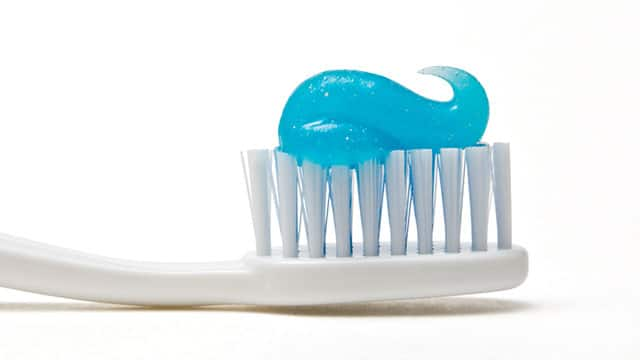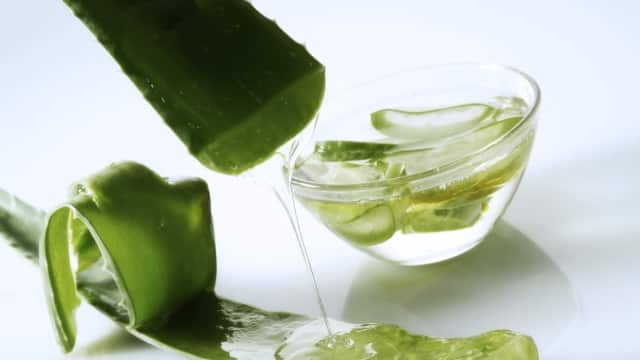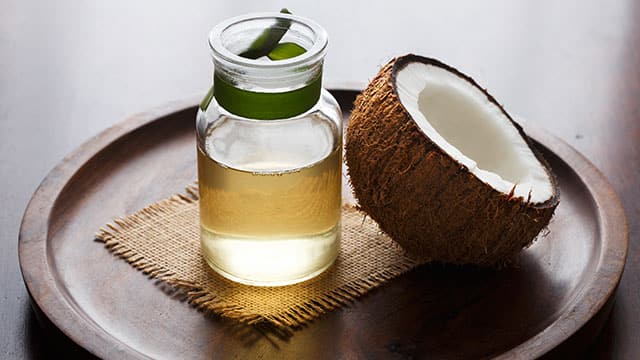What is in Toothpaste?
People have used toothpaste for thousands of years. The more modern formula has been around since the 1940s. While certain brands and products have a unique recipe, there are many common ingredients. As you can see on store shelves, there are even unique formulas depending on the toothpaste type. There are key ingredients for specialty toothpaste, such as whitening, sensitive teeth, etc. But the following elements are found in most cavity-fighting toothpaste:
- Fluoride
- Abrasives
- Flavors
- Humectants
- Detergents
Learn what each of these ingredients does and how they help your teeth below.
1. Fluoride
When it comes to fighting cavities, fluoride plays a starring role. The American Dental Association (ADA) reports that fluoride is “nature's cavity fighter“. Fluoride is a mineral that helps strengthen the enamel on your teeth, making them less susceptible to cavities and less likely to wear down from acidic foods and drinks. Although you can find a toothpaste that doesn't contain fluoride, only products that contain fluoride can qualify for the ADA's Seal of Acceptance.
2. Abrasives
Although abrasives play an active role in toothpaste, they are considered an inactive ingredient because they don't reduce your risk for cavities or gum disease. However, abrasives are important ingredients because they help remove food debris and surface stains from teeth.
Ancient Egyptians and Romans used abrasives like crushed eggshells or crushed oyster shells in their toothpaste. Today's abrasives are gentler and more hygienic, like calcium carbonate, dehydrated silica gels, and hydrated aluminum oxides. These ingredients scrub and polish the surface of the teeth without damaging your tooth's enamel. Keep these abrasives in mind and ensure you aren't pressing your toothbrush too firmly against your teeth because firm brushing can damage enamel and inflame the gumline.
3. Flavors
Fluoride and abrasives help you clean and protect your teeth, but they don't taste pleasant. That's why you'll typically find many flavoring ingredients in toothpaste. Toothpaste flavors typically come from sweetening agents, such as saccharin or sorbitol. Although these ingredients may taste sweet, toothpaste doesn't contain sugar, so it won't cause tooth decay. The ADA may give its Seal of Acceptance to toothpaste with sweeteners, but it will not recommend a toothpaste that contains sugar.
4. Humectants
Humectants are the ingredients that keep your toothpaste from drying out and becoming crumbly. Sorbitol is a flavoring agent and a humectant, so you may find it in many toothpaste products. It traps water in the toothpaste to get a nice, smooth paste when you squeeze the tube. Along with sorbitol, other examples of humectants include glycol and glycerol.
5. Detergents
Detergents make your toothpaste nice and foamy when you brush. One of the most common detergents in toothpaste is sodium lauryl sulfate. The foam ensures the other active ingredients coat your teeth.
The next time you're in the oral care aisle, pick up the nearest toothpaste and check the ingredients. Hopefully, you'll recognize a lot of the terms you'll find! Pick out the products with the ingredients you need and, don't forget, you can always ask your dental hygienist for recommendations and more information.
This article is intended to promote understanding of and knowledge about general oral health topics. It is not intended to be a substitute for professional advice, diagnosis or treatment. Always seek the advice of your dentist or other qualified healthcare provider with any questions you may have regarding a medical condition or treatment.
ORAL HEALTH QUIZ
What's behind your smile?
Take our Oral Health assessment to get the most from your oral care routine
ORAL HEALTH QUIZ
What's behind your smile?
Take our Oral Health assessment to get the most from your oral care routine















